Helen Hong
From Variability To Accuracy: Conditional Bernoulli Diffusion Models with Consensus-Driven Correction for Thin Structure Segmentation
Jul 17, 2025Abstract:Accurate segmentation of orbital bones in facial computed tomography (CT) images is essential for the creation of customized implants for reconstruction of defected orbital bones, particularly challenging due to the ambiguous boundaries and thin structures such as the orbital medial wall and orbital floor. In these ambiguous regions, existing segmentation approaches often output disconnected or under-segmented results. We propose a novel framework that corrects segmentation results by leveraging consensus from multiple diffusion model outputs. Our approach employs a conditional Bernoulli diffusion model trained on diverse annotation patterns per image to generate multiple plausible segmentations, followed by a consensus-driven correction that incorporates position proximity, consensus level, and gradient direction similarity to correct challenging regions. Experimental results demonstrate that our method outperforms existing methods, significantly improving recall in ambiguous regions while preserving the continuity of thin structures. Furthermore, our method automates the manual process of segmentation result correction and can be applied to image-guided surgical planning and surgery.
GenMix: Combining Generative and Mixture Data Augmentation for Medical Image Classification
May 31, 2024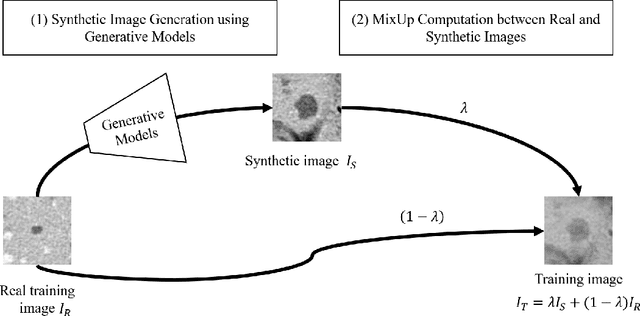
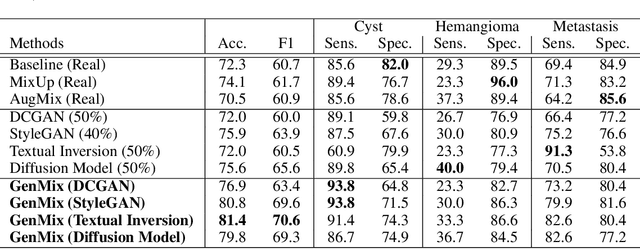
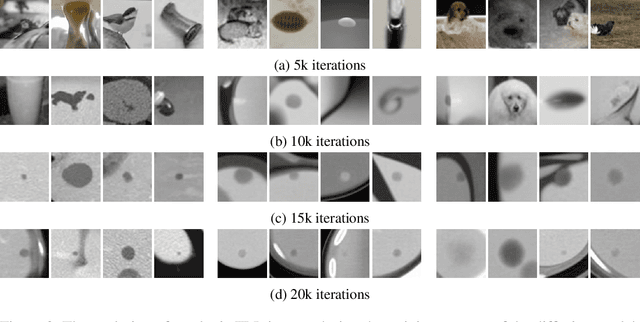
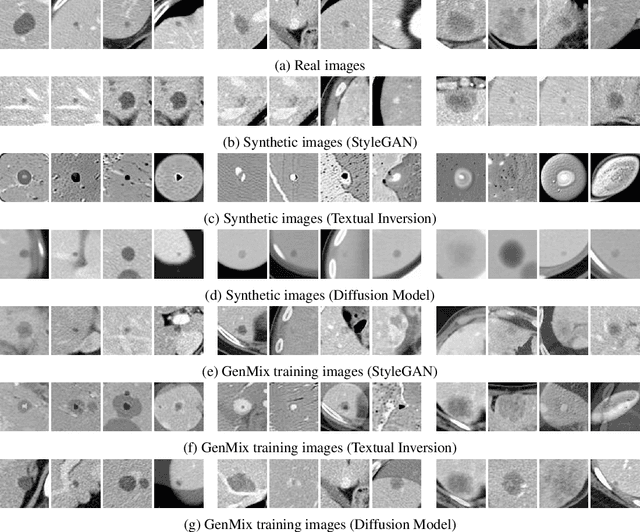
Abstract:In this paper, we propose a novel data augmentation technique called GenMix, which combines generative and mixture approaches to leverage the strengths of both methods. While generative models excel at creating new data patterns, they face challenges such as mode collapse in GANs and difficulties in training diffusion models, especially with limited medical imaging data. On the other hand, mixture models enhance class boundary regions but tend to favor the major class in scenarios with class imbalance. To address these limitations, GenMix integrates both approaches to complement each other. GenMix operates in two stages: (1) training a generative model to produce synthetic images, and (2) performing mixup between synthetic and real data. This process improves the quality and diversity of synthetic data while simultaneously benefiting from the new pattern learning of generative models and the boundary enhancement of mixture models. We validate the effectiveness of our method on the task of classifying focal liver lesions (FLLs) in CT images. Our results demonstrate that GenMix enhances the performance of various generative models, including DCGAN, StyleGAN, Textual Inversion, and Diffusion Models. Notably, the proposed method with Textual Inversion outperforms other methods without fine-tuning diffusion model on the FLL dataset.
Test-Time Mixup Augmentation for Data and Class-Specific Uncertainty Estimation in Multi-Class Image Classification
Dec 01, 2022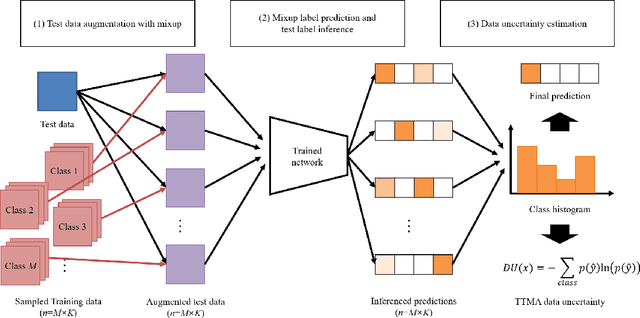
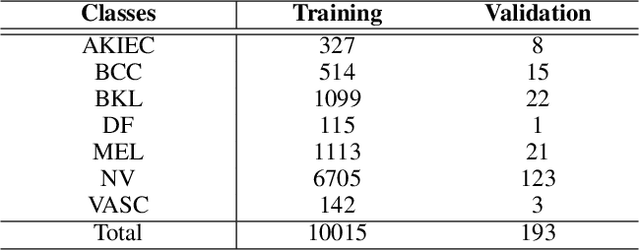
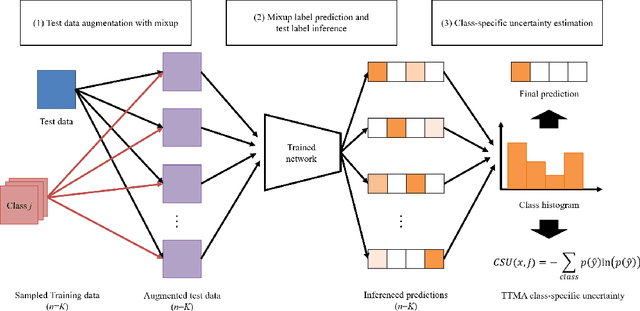
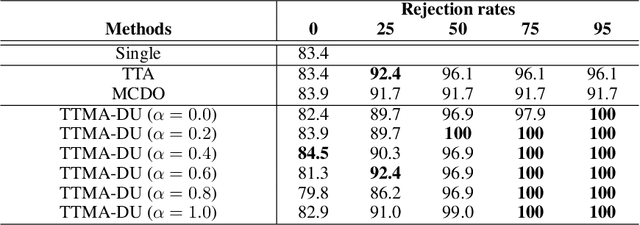
Abstract:Uncertainty estimation of the trained deep learning network provides important information for improving the learning efficiency or evaluating the reliability of the network prediction. In this paper, we propose a method for the uncertainty estimation for multi-class image classification using test-time mixup augmentation (TTMA). To improve the discrimination ability between the correct and incorrect prediction of the existing aleatoric uncertainty, we propose the data uncertainty by applying the mixup augmentation on the test data and measuring the entropy of the histogram of predicted labels. In addition to the data uncertainty, we propose a class-specific uncertainty presenting the aleatoric uncertainty associated with the specific class, which can provide information on the class confusion and class similarity of the trained network. The proposed methods are validated on two public datasets, the ISIC-18 skin lesion diagnosis dataset, and the CIFAR-100 real-world image classification dataset. The experiments demonstrate that (1) the proposed data uncertainty better separates the correct and incorrect prediction than the existing uncertainty measures thanks to the mixup perturbation, and (2) the proposed class-specific uncertainty provides information on the class confusion and class similarity of the trained network for both datasets.
Noisy Label Classification using Label Noise Selection with Test-Time Augmentation Cross-Entropy and NoiseMix Learning
Dec 01, 2022Abstract:As the size of the dataset used in deep learning tasks increases, the noisy label problem, which is a task of making deep learning robust to the incorrectly labeled data, has become an important task. In this paper, we propose a method of learning noisy label data using the label noise selection with test-time augmentation (TTA) cross-entropy and classifier learning with the NoiseMix method. In the label noise selection, we propose TTA cross-entropy by measuring the cross-entropy to predict the test-time augmented training data. In the classifier learning, we propose the NoiseMix method based on MixUp and BalancedMix methods by mixing the samples from the noisy and the clean label data. In experiments on the ISIC-18 public skin lesion diagnosis dataset, the proposed TTA cross-entropy outperformed the conventional cross-entropy and the TTA uncertainty in detecting label noise data in the label noise selection process. Moreover, the proposed NoiseMix not only outperformed the state-of-the-art methods in the classification performance but also showed the most robustness to the label noise in the classifier learning.
 Add to Chrome
Add to Chrome Add to Firefox
Add to Firefox Add to Edge
Add to Edge